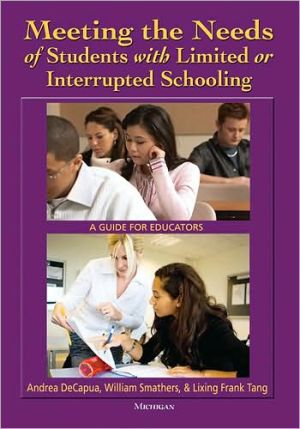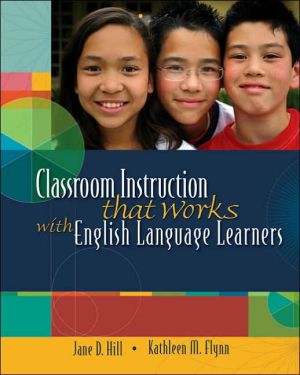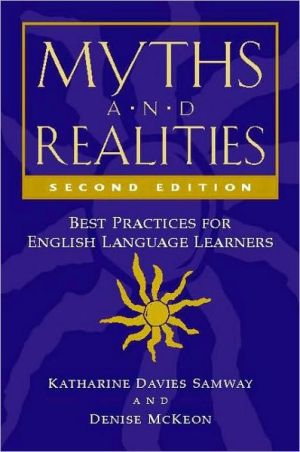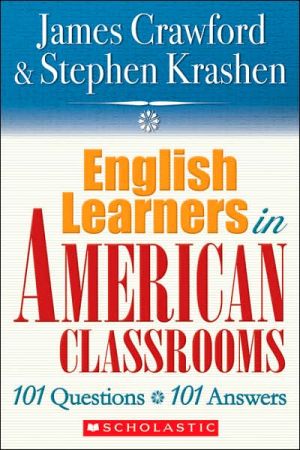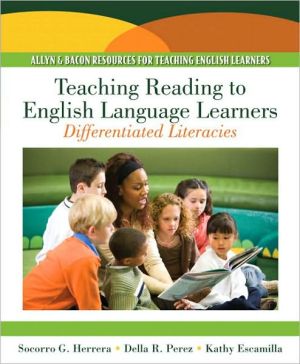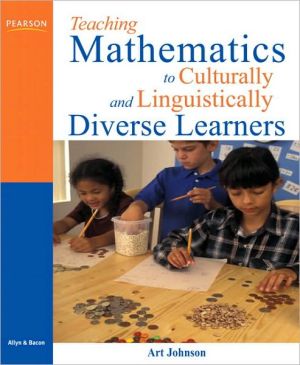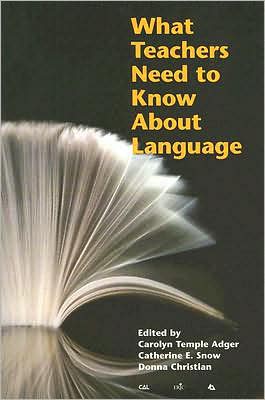Meeting the Needs of Students with Limited or Interrupted Schooling: A Guide for Educators
Today’s public schools are brimming with students who are not only new to English but who also have no schooling or a large break in their schooling. These students create unique challenges for teachers and administrators.\ \ This handbook is a welcome new resource for secondary teachers and administrators working in areas with burgeoning immigrant populations, as well as ESL instructors and researchers. The book addresses some of the many issues facing the subpopulation of English...
Search in google:
Today’s public schools are brimming with students who are not only new to English but who also have no schooling or a large break in their schooling. These students create unique challenges for teachers and administrators. This handbook is a welcome new resource for secondary teachers and administrators working in areas with burgeoning immigrant populations, as well as ESL instructors and researchers. The book addresses some of the many issues facing the subpopulation of English language learners who have limited or interrupted formal schooling, helping dedicated teachers and administrators to meet this subpopulation’s highly specific literacy development and content-area knowledge needs.Meeting the Needs of Students with Limited or Interrupted Schooling is grounded in research but goes beyond it to offer practical guidance on fostering the success of students from limited or interrupted schooling backgrounds by providing student case studies, model programs and classes, and helpful teaching techniques and tips.
Chapter 1 Who Are Slife? 1Challenges and Issues for Slife 2Identifying Slife 4Possible Indicators 6Additional Instruments for the Identification of Slife 8Tests 8Writing Samples 9Parent/Guardian Interviews 10Student Interviews 11Alternatives to Face-to-Face Interviews 15Profiles of Representative Slife 16Mamadou from Mali 16Sonia from the Dominican Republic 16Chang-Ching from China 17Brenda from Bosnia 17Luis from Mexico 18Chapter 2 Literacy and Academic Language Proficiency 20Literacy Skills 20Alphabet Knowledge 22Phonology and Phonics 22Print Materials 24Picture Books 26Academic Language Proficiency 26Vocabulary 26Sight Words 29Affixes 30Chapter 3 Educating the Whole Child 32Psychological Issues 33Post-Traumatic Stress Disorder 33Culture Shock 34School Shock 36Easing the Transition 38Humanistic Approaches to Working with Slife 38Alternative Goals 40Case Study: Leon, A 16-Year-Old 10th Grader from Sierra Leone 40Commentary on the Case Study 41Chapter 4 Program Models 42Newcomer Program Model 42The Pull-Out Model 44The Push-In Model 45Extended-Day, After-School, and Saturday Models 47Extended-Day Programs 47After-School Programs 47Saturday Programs 48Practical Considerations 50Chapter 5 Overview of Approaches and Practices 52Bloom's Taxonomy 53Small-Group/Cooperative Learning 56Experiential Learning: Field Trips 59Differentiated Learning 60Scaffolding Instruction 61Project-Based Learning 62Case Study: Project-Based Learning Overnight Field Trip 63Chapter 6 Best Classroom Techniques 65Routines 65Graphic Organizers67Choral Poetry Reading 67Class Books 68Autobiography and Biography Collage Project 69Listening and Reading with Audio Books 70Vocabulary Books 70Story Development Practice 71Wh-Question Practice 73Sentence Frames 74Mobile Hangers 75Cooperative Learning: Example from Science 75Structural Adaptation of Texts 78Field Trips 78Chapter 7 Key Elements of Successful Slife Programs 82Administrative Support 83The Principal 84Devoted and Well-Trained Teachers 84The Classroom 86A Well-Planned Program 87Team Teaching 89Articulation 89Program Assessment and Improvement 90Exit Strategies 92Portfolios 92Meaningful, Standards-Based Learning 93A School Community 94Communication with Parents 94Orientation Programs 95Parental Involvement 96Appendix: Graphic Organizers 98References 101Index 109
